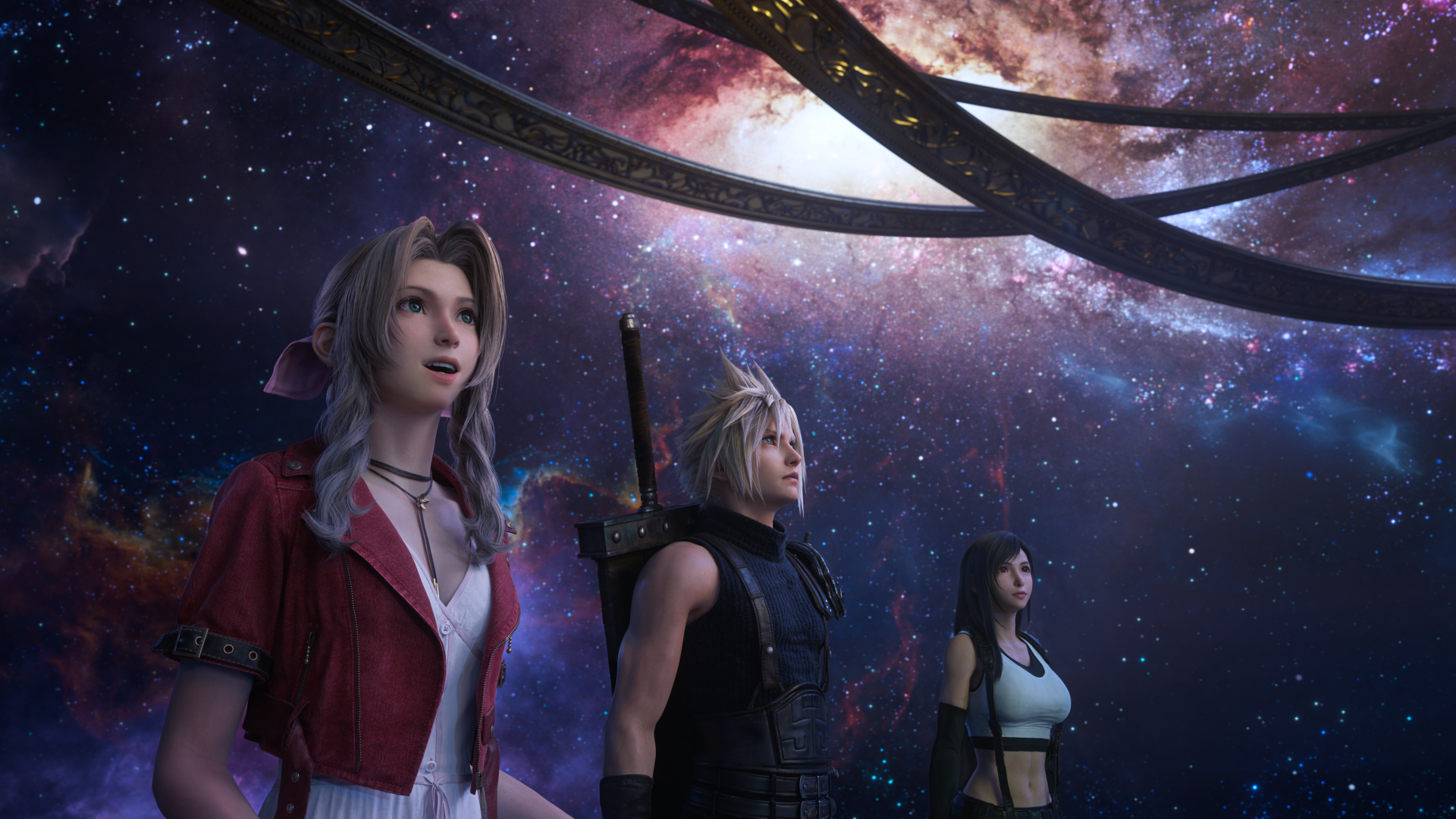Here’s what critics say collectively about Final Fantasy VII Rebirth, the second chapter in the trilogy of games remaking the 1997 classic.
Currently, on Metacritic, the action RPG holds universal acclaim, sitting at over 90 in the average score across over 120 reviews.
Open-World Zones
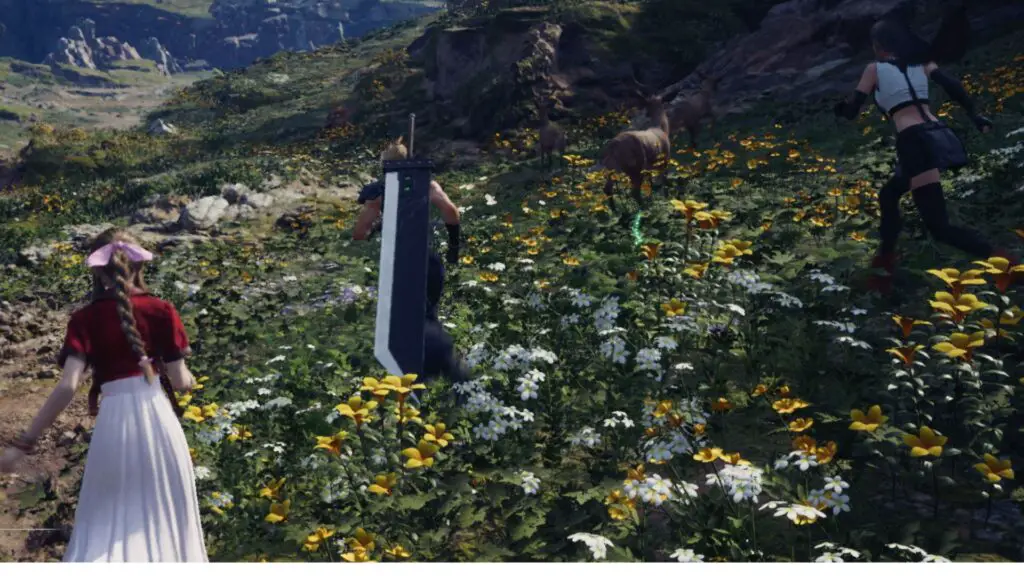
While the game was advertised as an open-world experience that extends outside of Midgar and into disc 2 of the original game, the reality is that Final Fantasy VII Rebirth is composed of open zones. What makes the game remarkable is that it executes a familiar design template to reinforce key themes.
The core gameplay loop involves locating Remnawave towers, scaling them, and then activating them to reveal additional activities in the area. From there, you can perform combat assignments, get treasure from excavation sites, investigate sanctuaries, collect resources, or take on more powerful enemies. It’s the typical Ubisoft formula that has become commonplace across the majority of open-world RPGs, but the implementation is more thoughtful.
Combat
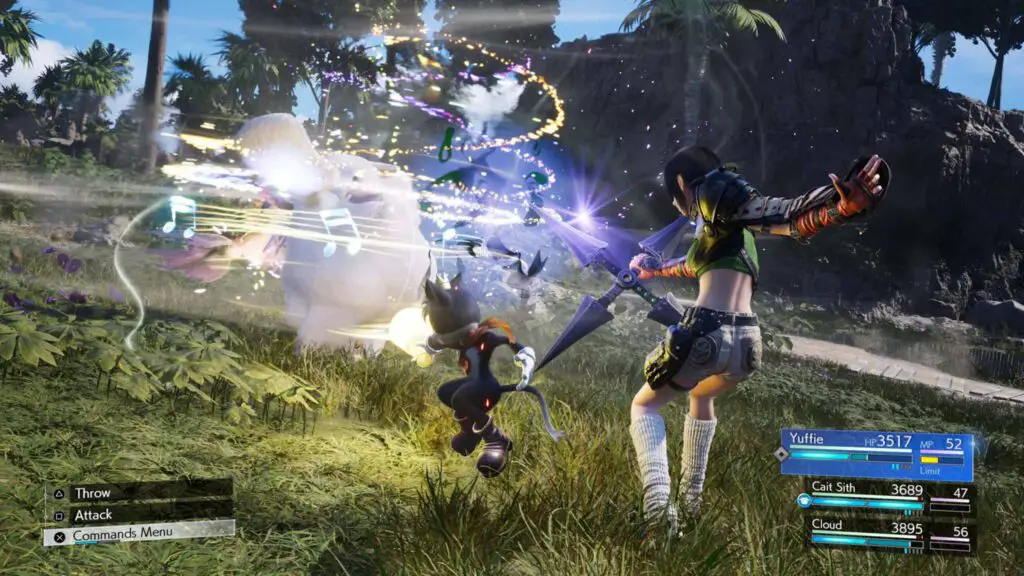
Rebirth plays and feels much like Remake in terms of combat. The hybrid model that combines satisfying action combat with the methodical nature of turn-based strategy introduced in the first game is expertly enhanced here. Improvements come from focusing on the synergy between characters, which ratchets up the dynamism of combat and introduces new mechanics to employ in the heat of battle. This was first explored in the INTERMission DLC for Remake.
Although each character has basic attacks that can be repeatedly executed, special actions are governed by segmented ATB bars. Abilities, items, and spells require ATB to perform, and filling up the bar requires attacking and defending. This was introduced in Remake and continues in Rebirth. However, the sequel has the ATB bar charging up far slower, which means that each character is going to face an uphill struggle when fighting alone. Yet, the synergy skills combining the efforts of multiple characters will rapidly speed up the rate of growth of the ATB bar.
Synergy skills can be both offensive and defensive, free to use repeatedly. This will not win you any fights as most aren’t particularly damaging, but they can have utility beyond topping up the ATB quickly. For instance, Aerith can request another character step in front to briefly defend her, providing her enough breathing room to use an item or spell uninterrupted. Cloud can have his sword enhanced with another character’s magic to deliver a powerful overhead slam. Synergy skills are critical to success in battle.
Like Remake, the Combat Simulator returns in this game, where summons can be challenged and called to aid in battle. They live up to their status by being difficult to fight, taking almost no damage, and unleashing devastating attacks that can wipe out an entire party instantly.
Battle encounters feel like more of a puzzle in Rebirth than they do in Remake, and the gameplay is better for it.
Difficulty
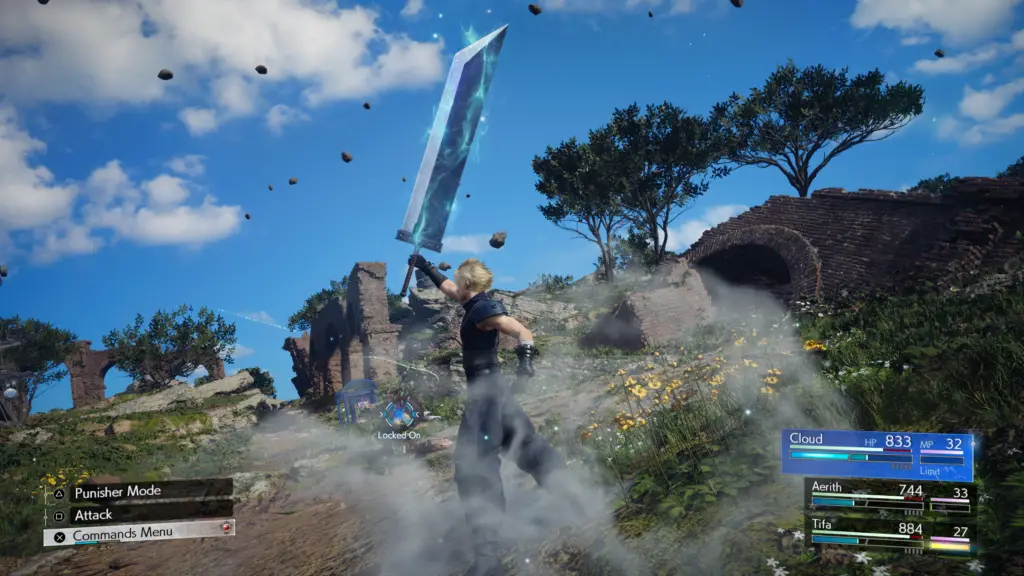
In addition to the slower ATB bar growth, Rebirth makes the experience harder across the board by making the stagger system more difficult to achieve. It requires a strict exploitation of weaknesses in each of the staggered and pressured states. Enemies also hit much harder this time, which demands the constant use of Assess to hammer away at them as fast as possible.
Synergy skills must be relied on to fill up ATB bars fast, then unleash elemental spells, and buff abilities, and place teammates in a position to do the same. The use of certain normal abilities marked with icons builds toward the use of more powerful synergy abilities. When two characters reach the required amount of synergy, they can combine for cinematic moves that look cool but also deal significant damage.
Weapon Skills and Folio System
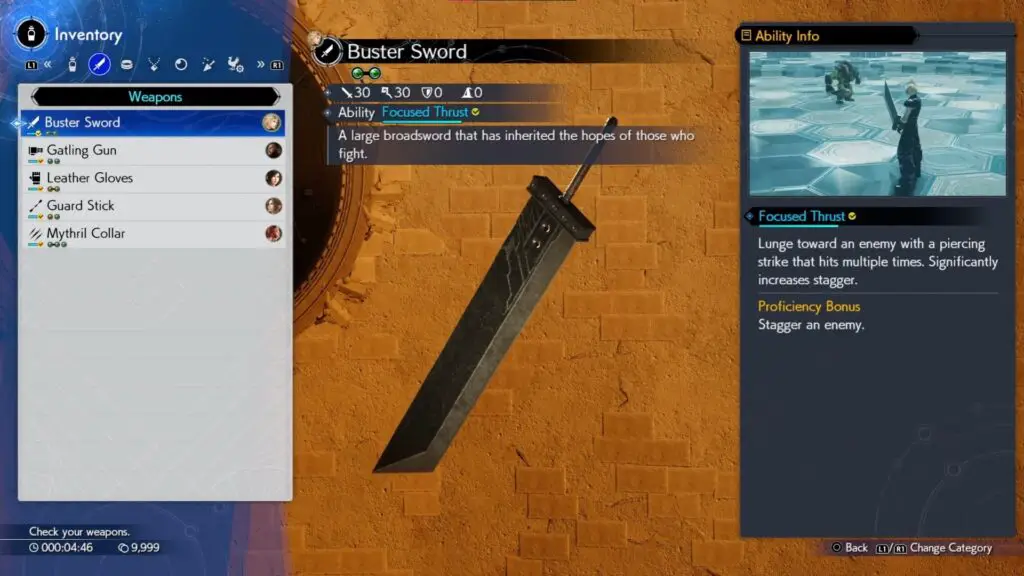
Weapon skills allow you to raise the overall weapon level, with skills slotted into weapons like Materia, providing a variety of bonuses like raising stats, increasing character-specific effectiveness, and improving magical abilities.
Folios are manuscripts themed for each character. As you level up, skill points become available to define a style for characters and by unlocking specific stat boosts and gauge behaviors.
Like Remake, there are only so many ways to customize, and it’s not to the level of sophistication as other types of RPGs, but you can easily reset and redistribute points for specific encounters as necessary.
Story and Characterization
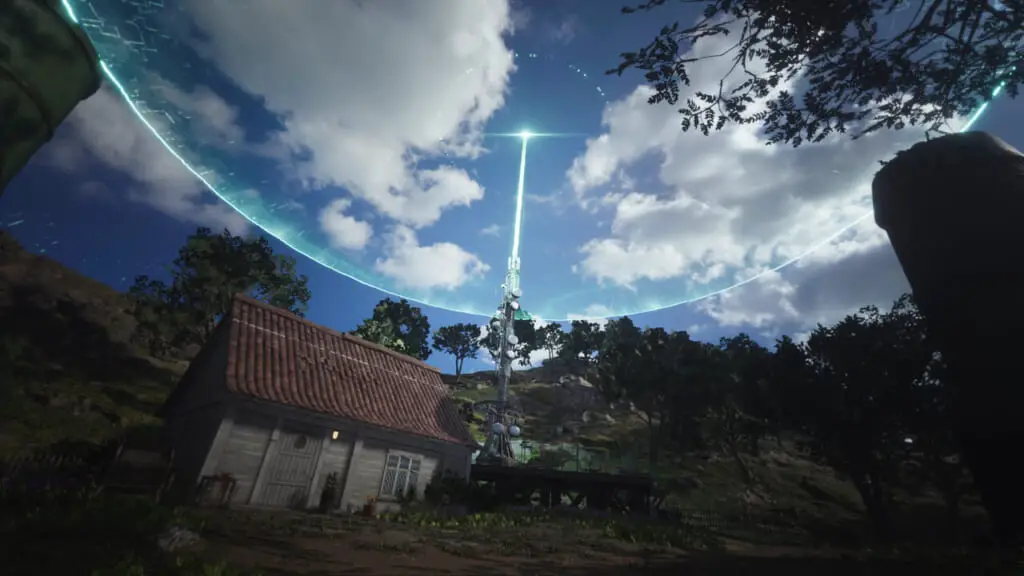
Rebirth enriches the narrative of the original JRPG like Remake did by delving deeper into the characters with a fresh coat of paint, giving more attention to the main cast, and allowing each person to take center stage.
Many backstories from Remake were explored on the surface level, but Cloud was always the main driver. However, individual stories in Rebirth showcase moments that enhance the relationship between the characters. Party members each have bonds with Cloud that are strengthened by dialogue choices and side missions.
Individual stories encompass the majority of the game’s narrative substance and runtime, but Rebirth repeatedly stumbles when it comes to major consequences for how the story plays out moving forward.
People across the land are in need of help, and provides a nice shift in tone to bring levity to certain events, despite the lack of innovation from a gameplay perspective.
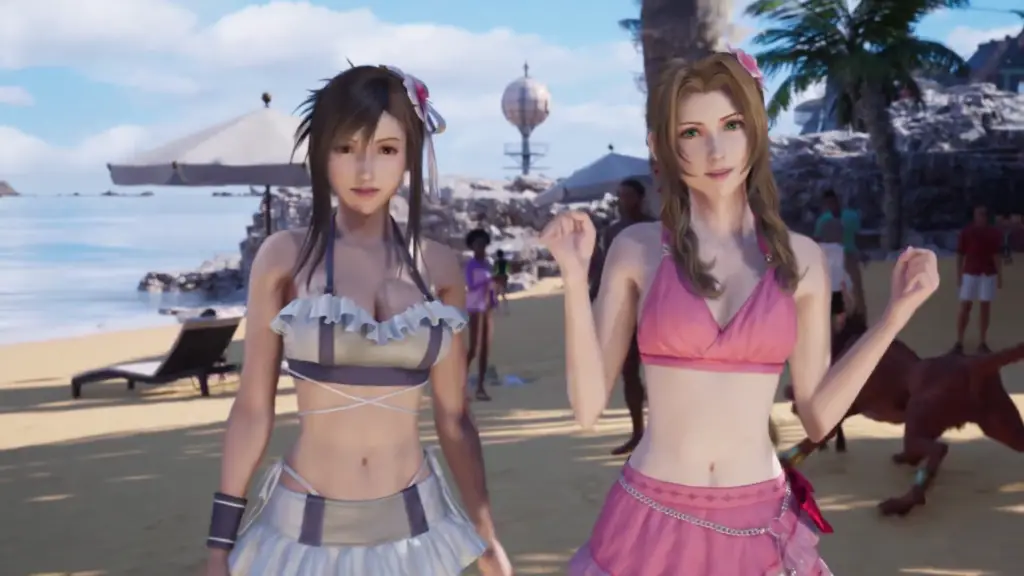
In between the moments where the main narrative plays out, Rebirth is less consistent in its delivery and quality. Pacing is a major issue, and the middle stretch is a bit too similar to the original FF7. Much of the game becomes filler and a distraction.
After building up steam, the main story stops for vacations and frivolous activities. Key moments in these chapters help move the plot forward, carry emotional weight, and introduce characters but are held hostage by out-of-place gameplay that simply feels like padding. You essentially need to jump through artificial hoops to get to the next exciting moment. This includes mini-games which are forced down your through in Rebirth, unlike Remake.
Mini Games

Remake introduced a slew of mini-games in the base experience and the INTERMission DLC, including Darts, Whack-a-Box, Squats, Combat Coliseum, Pull-Ups, Combat Simulator, and the Clash-of-Clans tabletop experience known as Fort Condor.
However, Rebirth introduces Gold Saucer. While it is an iconic feature of the classic JRPG from 1997, the majestic theme park filled with minigames feels like more of a brick wall to narrative momentum that refuses players to bypass. Disparate ideas for gameplay packaged into minigame form become the story when the fate of the world hangs in the balance.
“That” Scene
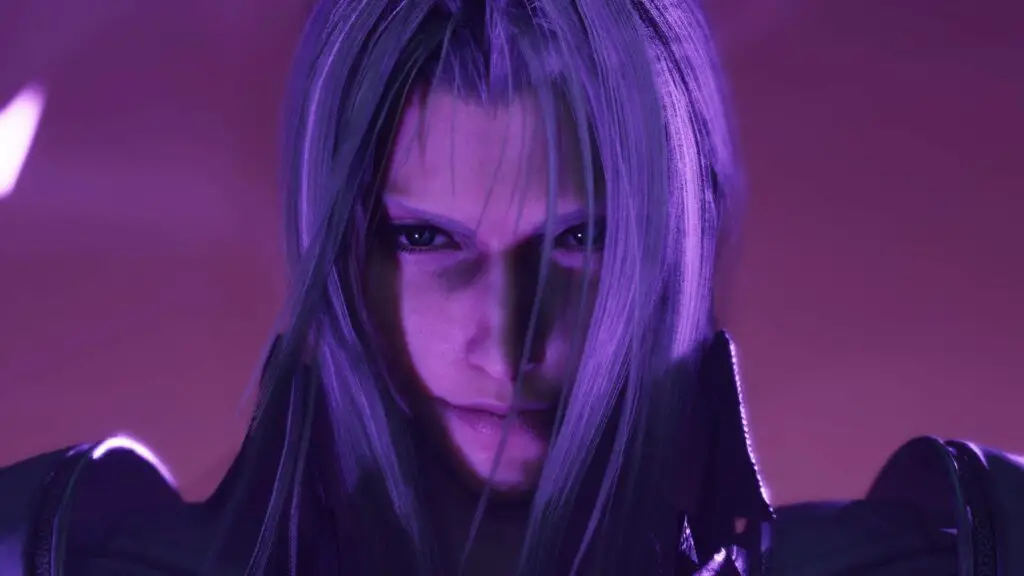
The industry will never forget the iconic scene of the original FF7 involving the death of a beloved Ancient. Its emotionally devastating impact was cemented into the minds of millions of players and changed the way many looked at characters from video games.
Sadly, fans will be disappointed with the modern interpretation in Rebirth, as it robs the same character of a critical moment with a messy delivery, losing the message among narrative noise that simply was not there before and it is so uncharacteristic of a title that is otherwise sharp in its presentation. It’s almost incomprehensible.
Conclusion
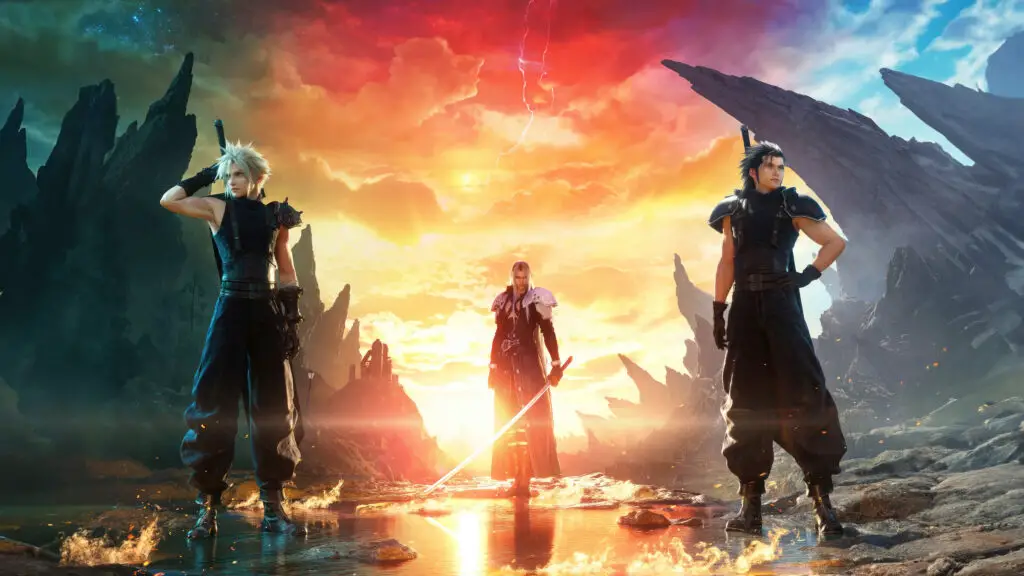
In spite of setbacks with the narrative, forced minigames, and staple open-world features that don’t offer much in the way of innovation, Rebirth‘s pros are far better than its cons. Refined gameplay embraces the focal point and breathes new life into combat while reinforcing the story and its underlying themes.
Review Roundup
Here are all the collective reviews from major publications and journalists in the industry.
| Aggregator | Score |
|---|---|
| Metacritic | 92% |
| OpenCritic | 100% |
| Publication | Score |
|---|---|
| Destructoid | 9.5/10 |
| Digital Trends | 4.5/5 |
| Easy Allies | 9.5/10 |
| Eurogamer | 4/5 |
| Game Informer | 8.5/10 |
| GameSpot | 8/10 |
| GamesRadar+ | 4.5/5 |
| Hardcore Gamer | 4/5 |
| IGN | 9/10 |
| NME | 5/5 |
| Push Square | 8/10 |
| RPGFan | 93/100 |
| Shacknews | 8/10 |
| The Guardian | 4/5 |
| Video Game Chronicle | 5/5 |
| VG247 | 4/5 |

